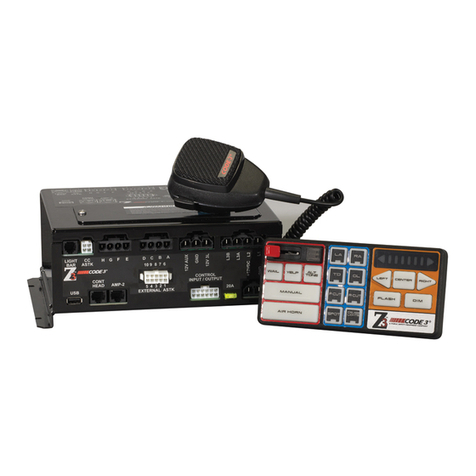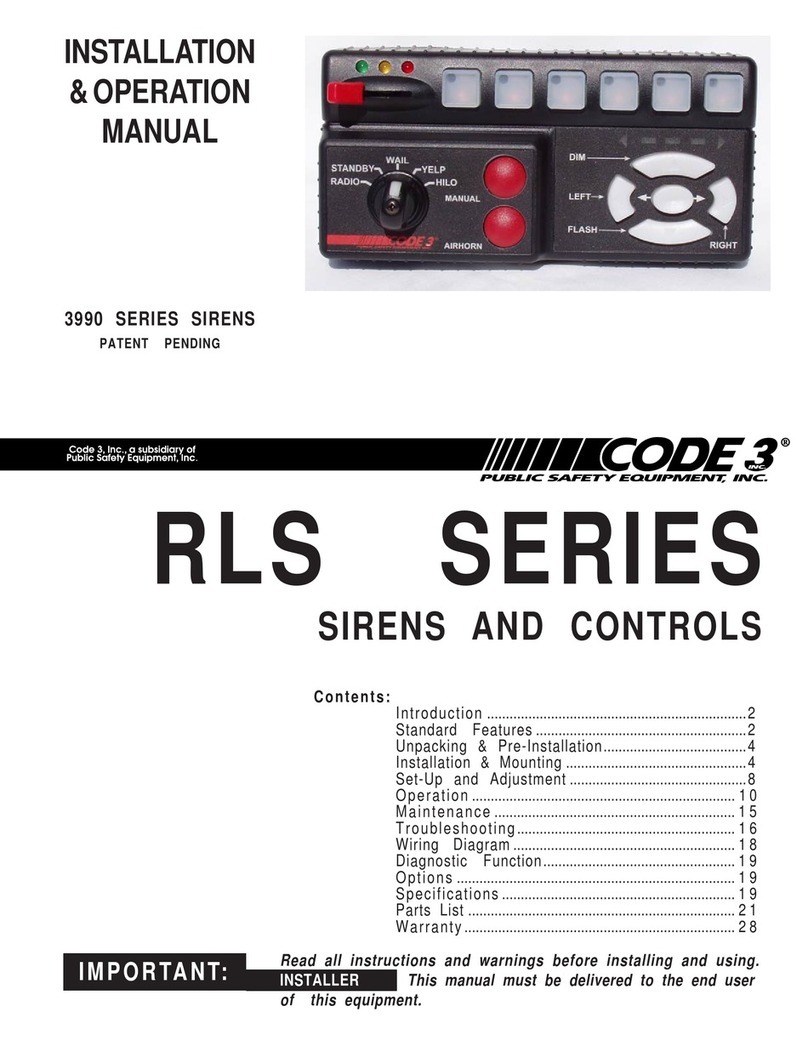
The SPRINTER amplier is not waterproof. It must be mounted in a location that is sheltered from rain, snow, standing
water, etc. It must also be installed in an adequately ventilated area. Do not install near heater ducts or under the vehicle’s
hood. Using the mounting holes on the amplier as a template, scribe four drill position marks at the mounting locations. Be
sure that both sides of the mounting surface are clear of parts that may be damaged. The siren accessory kit with mount-
ing hardware supplied provides the user with a choice of mounting hardware. Secure the amplier to the mounting surface,
using the mounting hardware.
Connection between the hand-held controller and the SPRINTER amplier box is identied by the amplier label.
Note: The microphone and control head connectors are different and must not be plugged into the wrong socket.
Use of the extension cable will assure the control head is plugged in correctly.
Larger wires and tight connections will provide longer service life for components. For high current
wires it is highly recommended that terminal blocks or soldered connections be used with shrink
tubing to protect the connections. Do not use insulation displacement connections (e.g. 3M) Scotch
lock type connectors. Route wiring using grommets and sealant when passing through compartment
walls. Minimize the number of splices to reduce voltage drop. High ambient temperatures (e.g.
under hood) will signicantly reduce the current carrying capacity of wires, fuses, and circuit breakers.
Use “SXL” type wire in engine compartment.
All wiring should conform to the minimum wire size and other recommendations of the manufacturer
and be protected from moving parts and hot surfaces. Looms, grommets, cable ties, and similar
installation hardware should be used to anchor and protect all wiring.
Fuses or circuit breakers should be located as close to the power takeoff points as possible and
properly sized to protect the wiring and devices. Particular attention should be paid to the location
and method of making electrical connections and splices to protect these points from corrosion
and loss of conductivity. Ground (Earth) terminations should only be made to substantial chassis
components, preferably directly to the vehicle battery.
The user should install a circuit breaker sized to approximately 125% of the maximum Amp capacity
in the supply line to protect against short circuits. For example, a 30 Amp circuit breaker should carry
a maximum of 24 Amps.
DO NOT USE 1/4” DIAMETER GLASS FUSES AS THEY ARE NOT SUITABLE FOR CONTINUOUS
DUTY IN SIZES ABOVE 15 AMPS. Circuit breakers are very sensitive to high temperatures and will
“false trip” when mounted in hot environments or operated close to their capacity.
Connections
Reference Figure 1 – Wiring Diagram
1. Disconnect the cable on the negative end of the battery before performing installation. Do not connect the system to
vehicle battery until all other electrical connections are made and mounting of all components is complete. Verify the
polarities of the cable and ensure that no short circuits exist before connecting to the battery terminals. If routing the
extension cable requires drilling a hole in sheet metal or other material, drill a 5/8″ hole in the material and install a 5/8″
grommet (not supplied) to protect the cable.
2. Attach the handheld controller to the amplier by inserting the connector on the end of the cord into the mating port on
the amplier. If the amplier is remotely mounted, use the included extension cord and extension adaptor.
T56095 Rev. A Page 4 of 22





























